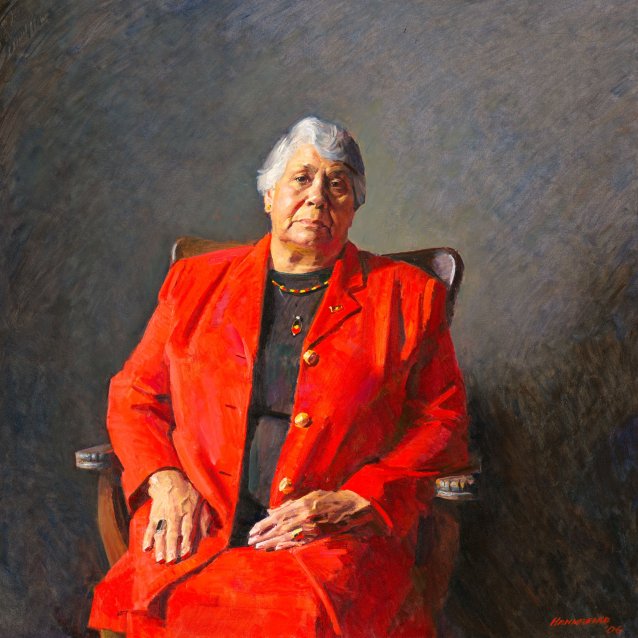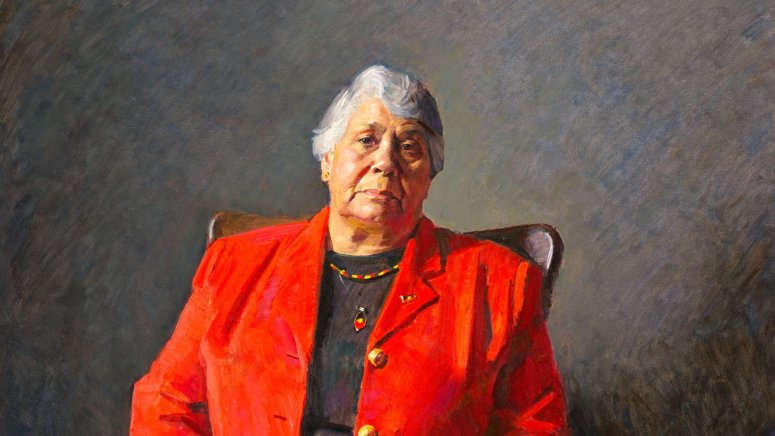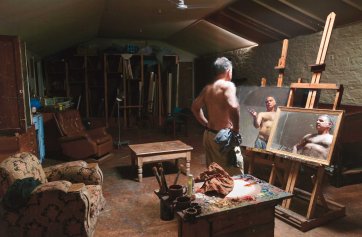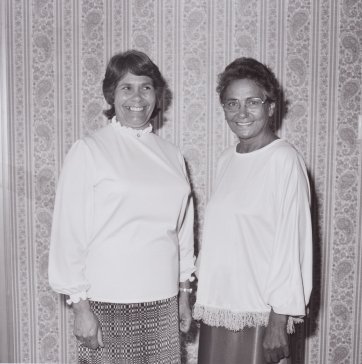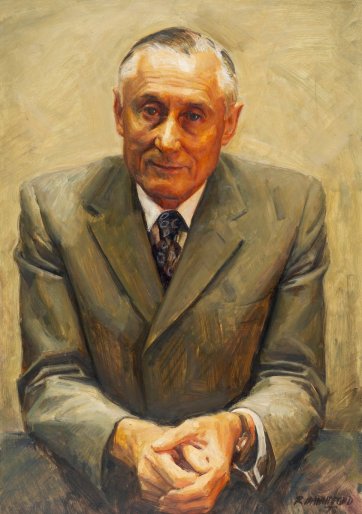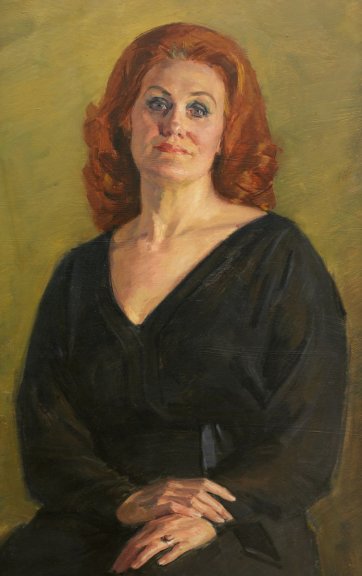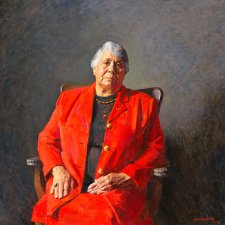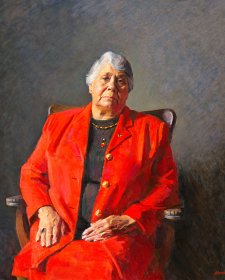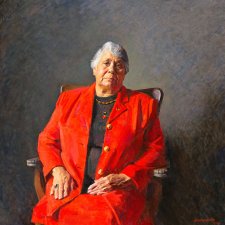Dr Lowitja O’Donoghue AC CBE DSG (1932–2024), a Yankunytjatjara woman, dedicated her life’s work to advancing the rights and wellbeing of Australia’s First Peoples. Born at Indulkana in the APY Lands in South Australia, she was removed from her mother at the age of two and raised in a children’s home run by missionaries at Quorn in the Flinders Ranges. She recollects that she became rebellious at a young age after hearing her culture being denigrated. ‘I was always asking the question about who am I, where did I come from, who’s my mother and who’s my father, and where are they? Never got any answers to any of that at all,’ she says. At 16 she got a job as a nanny. Encouraged to become a nurse, she applied for a traineeship and was – eventually – accepted, becoming the first Aboriginal woman to complete her nursing training at the Royal Adelaide Hospital. She worked there until the early 1960s, and also travelled to remote communities, learning about her heritage through ‘just doing what I could to heal people’. She joined the Department of Aboriginal Affairs in 1967 and by 1975 she had become its regional director in South Australia. In 1977 she was elected Foundation Chair of the National Aboriginal Conference, formed under prime minister Malcolm Fraser as a peak body to advise the Federal government on Indigenous affairs, and she chaired the Aboriginal Development Commission from 1989 to 1990. Named a Commander of the Order of the British Empire in 1983, she was Australian of the Year in 1984, and in 1999 she was named a Companion of the Order of Australia. In 2005 she was invested by Pope John Paul II as a Dame of the Order of St Gregory the Great. While Chair of the Aboriginal and Torres Strait Islander Commission between 1990 and 1996, she helped to draft the Mabo legislation. The holder of six honorary doctorates, she was the patron of the Lowitja Institute for Aboriginal and Torres Strait Islander health research. In 2022, on her 90th birthday, the Lowitja Institute formed the Lowitja O’Donoghue Foundation to continue and preserve her legacy.
Robert Hannaford said of O'Donoghue that he observed a 'vast understanding and sympathy in her face, a sadness', but also thought she looked 'fantastic in that light I've got in that studio'. The pair became friends during the many hours of sittings involved in creating the work.
Commissioned with funds donated by BHP Billiton Limited, Rio Tinto Aboriginal Fund, Newmont Australia Limited, Reconciliation Australia, Hon Paul Keating and Hon Fred Chaney 2006
© Commonwealth of Australia
The National Portrait Gallery respects the artistic and intellectual property rights of others. Works of art from the collection are reproduced as per the
Australian Copyright Act 1968 (Cth). The use of images of works from the collection may be restricted under the Act. Requests for a reproduction of a work of art can be made through a
Reproduction request. For further information please contact
NPG Copyright.
